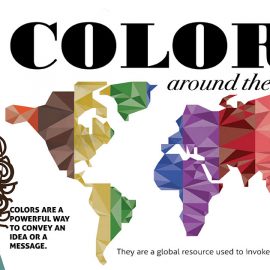
How to Become a Graphic Designer
Graphic design is a creative process that reaches into everything we do these days, from websites to application interfaces to product packaging. Τhe talented hand of the graphic designer is seen everywhere. It can be a rewarding, challenging career.
Here are some ideas to help set you on that path.
Method 1: Learn the fundamentals
1. Choose an area of graphic design
Before you can call yourself a graphic designer, you have to make some decisions. For example, are you interested in advertising, web development, multimedia (i.e. the TV industry), print design or animation? These can all be considered different forms of graphic design. Narrow your focus on an area that appeals to you.
While graphic design is fundamentally the same, whether in print or online, there are also key differences in resolutions, colour space and other variables that are specific to the medium you want to focus on.
Though you can certainly do both, it’s best to focus on one to begin with.
2. Acquire the tools
The industry standard applications for graphic design are Adobe Photoshop and Adobe Illustrator.
While both applications are designed to be easy to use from the start, they are very feature-rich and will require a great deal of focused effort to master them.
These programs aren’t cheap. To get started, play around with free alternatives like Gimp, Scribus, Inkscape and Pixlr, all of which will help you learn the ropes until you’re willing and able to drop big bucks on the real thing.
3. Purchase textbooks
Focus on books that teach design fundamentals, then study as though you were taking a college course. Instead of working for a grade, however, your reward will be a career that you love.
4. Take a course in graphic design
It’s not just to become an expert in programs like Photoshop and Illustrator, but to learn how to use these valuable tools in conjunction with developing a marketable design sense.
5. Get involved with the design community
Practicing at home is a great, safe way to learn the ropes, but eventually, you need to put yourself out there so you can get feedback. Though it may be painful at first, keep your ego in check and take the tips seriously. The payoff will be enormous.
Additionally, it’s important to see what other people are doing, so that you’re exposed to more than just one or two styles.
As with any business, networking is important in graphic design, especially if you intend to freelance. Make friends, keep in touch, be willing to learn and you might just get work out of it.
6. Further your education
Really interested in graphic design? Consider getting a degree. Academic settings can be inspiring and networking with others in your field is always a good thing.
On top of that, many people won’t hire a graphic designer without seeing some proof that they’ve been properly trained.
Method 2: Develop your style
1. Do what you love
If you are compelled by ornate designs with florid script and bright colours, focus on that. If you love that style, focus on developing that design sense.
If your passion is for the clean, well-balanced line, with simple colour schemes and powerful graphics, make it your own.
2. Read graphic design books
They can be really helpful and will speed up the process of your education.
3. Study the pros
Hunt down and devour the designs featured in newspapers, magazines, the internet and anywhere else you spot graphic design (Hint: it will be everywhere you look).
Don’t limit yourself to what is traditionally considered “graphic design”, but expand into other areas as well, such as industrial designing or architecture.
Draw inspiration to foster your own creativity. Don’t just look in the likely places. Check out wine stores, for example: label design is a key part of the industry. Also check out fashion websites, book stores, music labels, even product design packaging.
4. Research fonts
People who get into typography are a whole other breed. They agonise over book print, street signs and movie credits. They have serious opinions about serifs. They mock your Comic Sans. A good graphic designer should understand the importance of typeface, leading, kerning and everything else that goes with creating effective text.
5. Develop a unique style
You want people, when they see your designs, to recognise and know that it is your work. The more they know, the quicker things will work for you.
6. Gather interesting designs
Whether it’s a t-shirt, a pamphlet, a food label, a post card or a poster, collect anything and everything that excites and inspires you.
Study them, note what you like and don’t like and tuck them away so that you can use them as references whenever you feel stuck on a project.
7. Don’t throw any of your work away
Even if you hate something, swallow that lump in your throat and save it. When you feel strong enough, look back over your old work with a fresh eye.
What worked? What didn’t? How much has your style grown? You might even be inspired to redo some of your older projects and turn them into masterpieces.
8. Redesign other people’s work
See a terrible design somewhere? Take a photo or save a copy and rework it for fun.
See a fantastic design? Even better! Challenge yourself to add something that the original artist missed.
Just as the aspiring music student studies the masters and learns what they did, by working within other people’s designs will you be able to truly understand what does or doesn’t make it tick and why.
9. Create a portfolio
In addition to needing one, if you ever want to get real work, putting together a portfolio challenges you to make critical judgments of your own work. Which pieces are your best and why? Which ones don’t make the cut? Is there a theme, and if so, can you play it up in the portfolio?
If you want to work digitally, showcase your portfolio on a website.
SOURCE: wikiHow



![[VIDEO] The Art of Logo Design [VIDEO] The Art of Logo Design](https://www.rimidesigns.com.au/WPsite/wp-content/uploads/2021/01/Rimidesigns-The-Art-Of-Logo-Design-270x270.jpg)